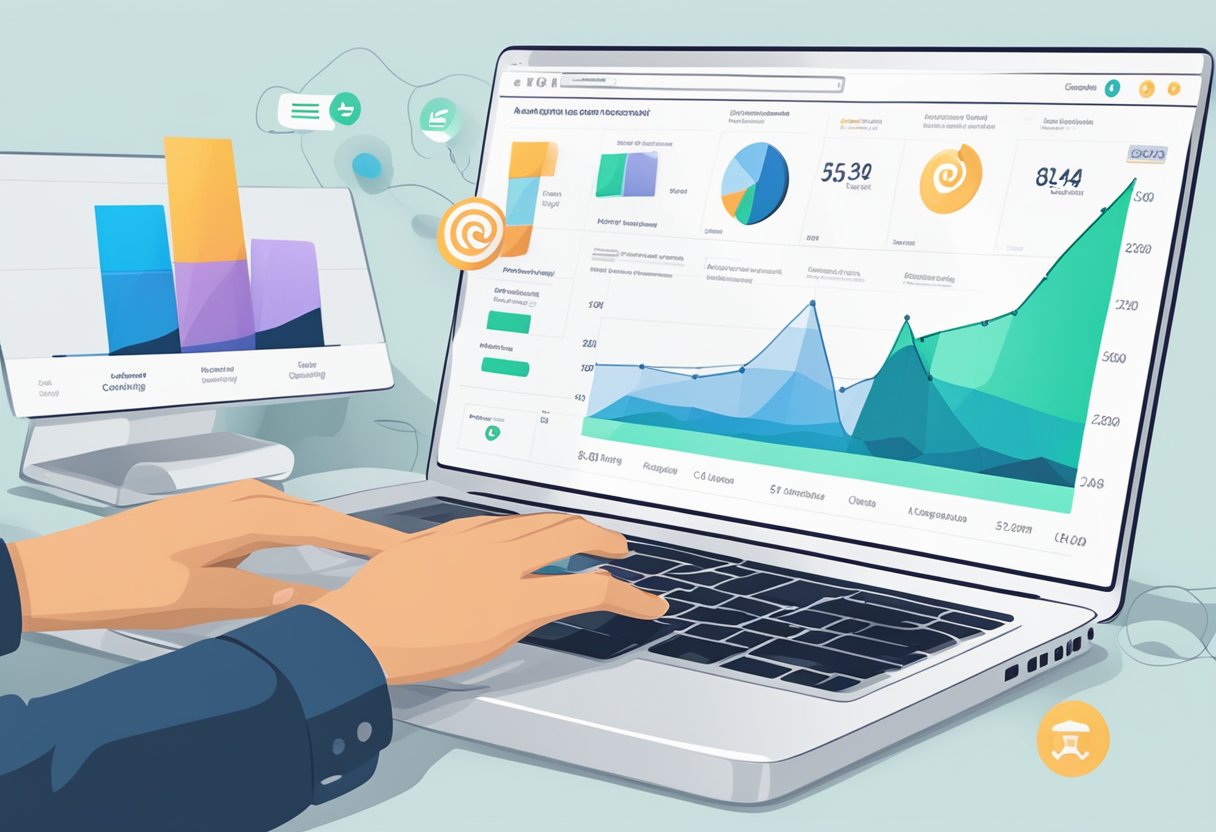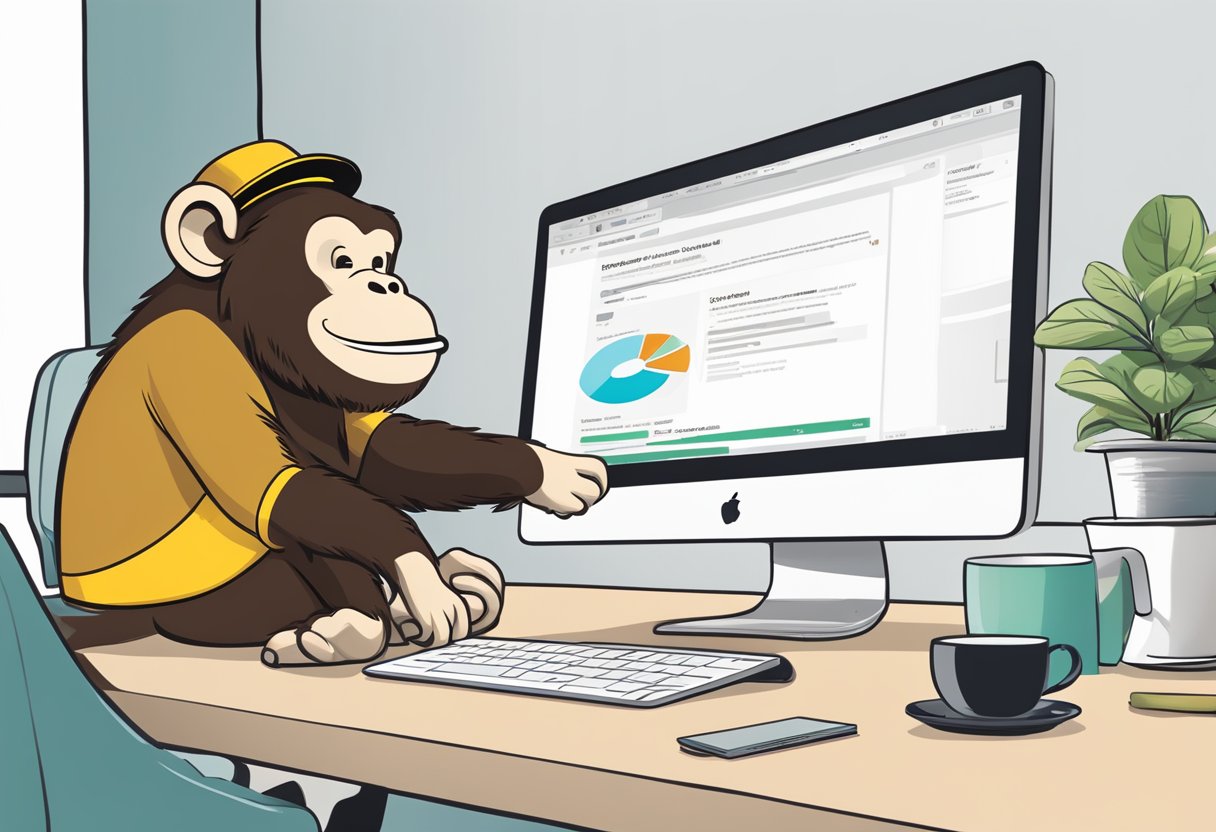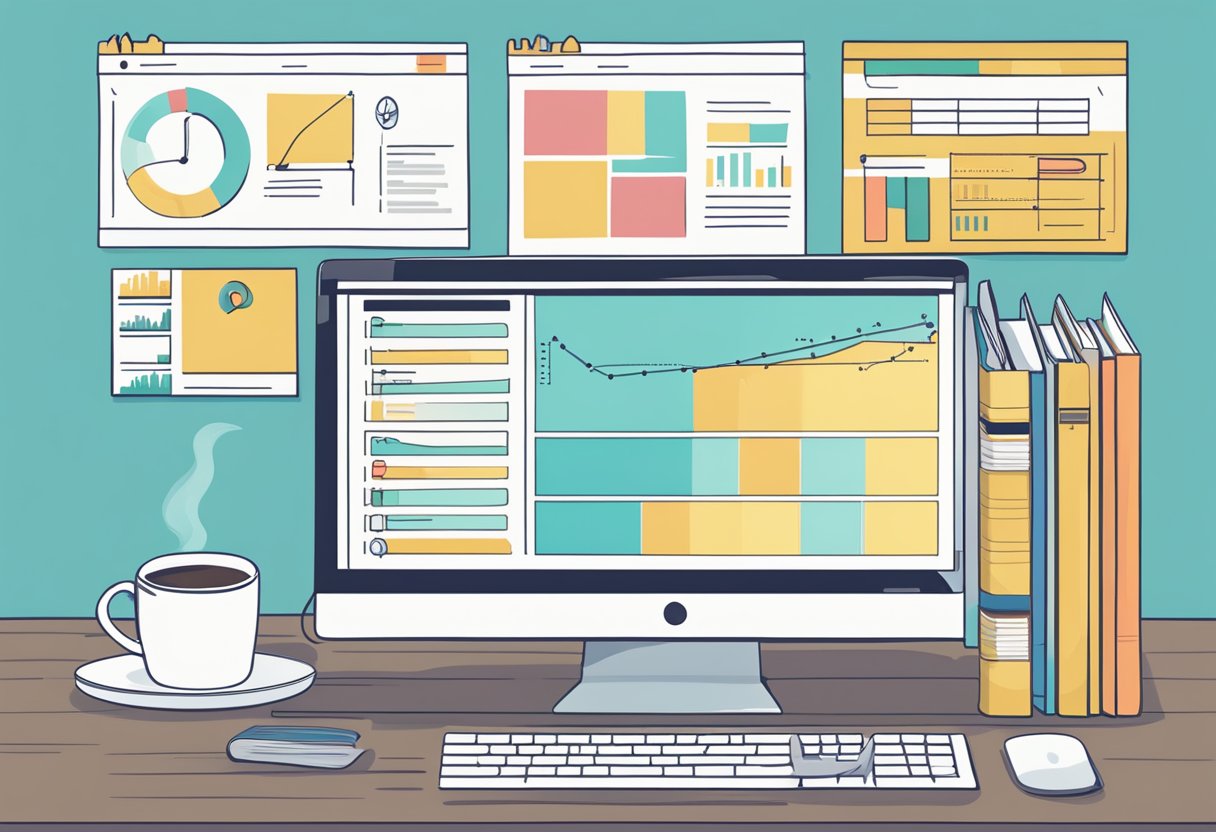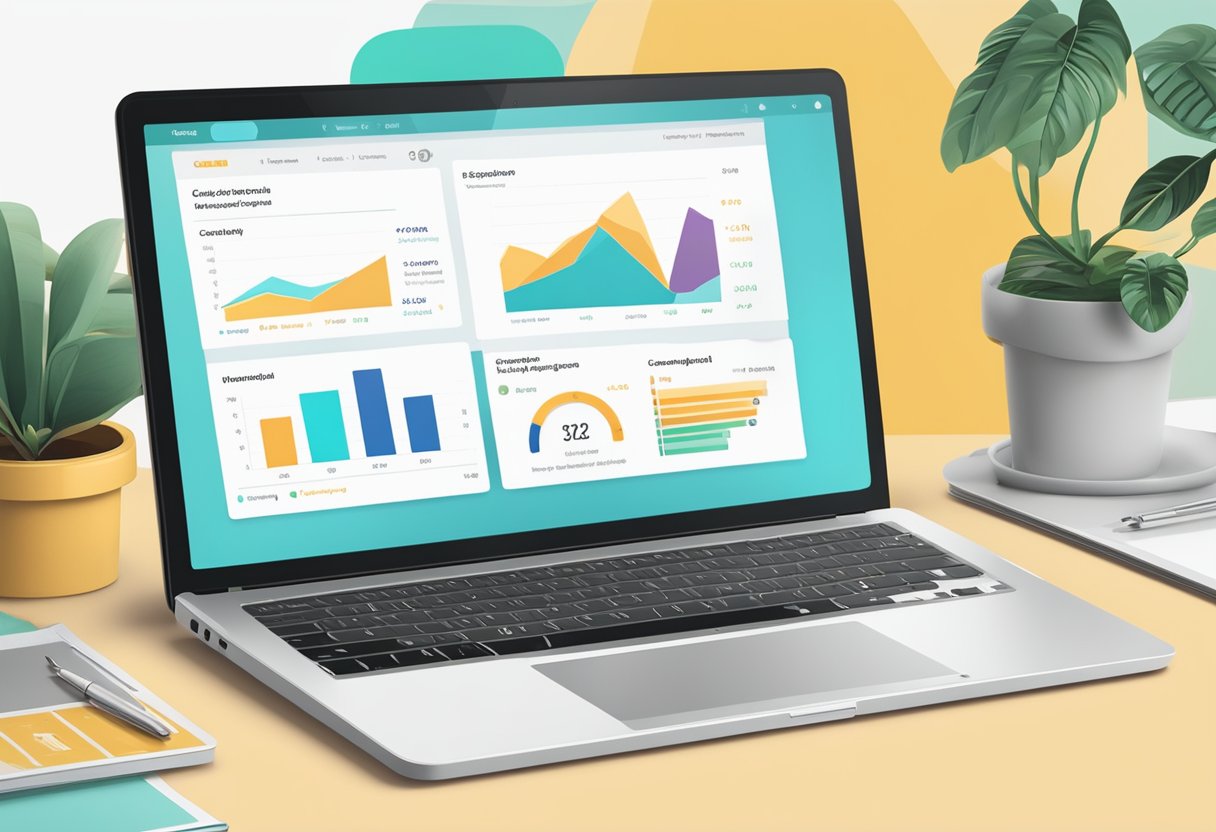Email campaigns are an effective way for businesses to reach out to their audience and keep them engaged. With the right tools and strategies, email campaigns can help drive traffic to your website, increase sales, and build brand awareness. One of the most popular email marketing tools available today is Mailchimp.

Mailchimp is a user-friendly platform that allows businesses to create and send email campaigns to their subscribers. It offers a range of features, including customizable templates, automated campaigns, and detailed analytics. With Mailchimp, businesses can easily create professional-looking emails that are tailored to their audience’s interests and preferences.
To run successful email campaigns with Mailchimp, businesses need to have a clear understanding of their target audience and their goals. They should also have a well-defined email marketing strategy that takes into account factors such as the frequency of emails, the type of content to include, and the call-to-action. By following best practices and leveraging Mailchimp’s tools and features, businesses can create effective email campaigns that help them achieve their marketing objectives.
Understanding Email Campaigns

Defining Email Marketing
Email marketing is a digital marketing strategy that involves sending commercial messages to a group of people via email. The goal of email marketing is to create a relationship with customers and potential customers by providing them with valuable information about a business’s products or services. Email marketing can be used to promote sales, build brand awareness, and increase engagement with customers.
Benefits of Email Campaigns
Email campaigns are a powerful tool for businesses to reach their target audience. They offer several benefits, including:
Cost-effective: Email campaigns are an affordable way to promote products or services. They do not require expensive printing or postage costs associated with traditional direct mail campaigns.
Targeted: Email campaigns can be tailored to specific groups of people based on demographics, interests, and behaviors. This allows businesses to send personalized messages to their audience, increasing the chances of engagement.
Measurable: Email campaigns provide businesses with valuable data such as open rates, click-through rates, and conversion rates. This information can be used to optimize future campaigns and improve overall marketing strategies.
Engaging: Email campaigns can be designed to be visually appealing and interactive, increasing engagement with the audience. They can also include calls to action that encourage recipients to take action, such as making a purchase or visiting a website.
Types of Email Campaigns
There are several types of email campaigns that businesses can use to achieve their marketing goals. Some of the most common types of email campaigns include:
Welcome emails: These are sent to new subscribers to introduce them to a business and its products or services.
Promotional emails: These emails are designed to promote a sale, discount, or special offer.
Newsletter emails: These emails provide subscribers with regular updates about a business’s products or services, industry news, and other relevant information.
Abandoned cart emails: These emails are sent to customers who have added items to their online shopping cart but have not completed the purchase.
Re-engagement emails: These emails are designed to win back customers who have not engaged with a business in a while.
In conclusion, email campaigns are a valuable tool for businesses to promote their products or services, build brand awareness, and increase engagement with their audience. By understanding the different types of email campaigns and their benefits, businesses can create effective email marketing strategies that drive sales and grow their business.
Setting Up Your Mailchimp Account

To run successful email campaigns with Mailchimp, the first step is to create an account. Creating an account is simple and straightforward.
Creating an Account
To create a Mailchimp account, visit the Mailchimp website and click on the “Sign Up Free” button located at the top right corner of the homepage. You will be prompted to enter your email address, username, and password. Once you have entered your details, click on the “Get Started” button to create your account.
Understanding the Dashboard
After creating your account, you will be directed to the Mailchimp dashboard. The dashboard is the central hub of your Mailchimp account, where you can manage all aspects of your email campaigns. The dashboard is divided into several sections, including:
- Campaigns: This section allows you to create, manage, and track your email campaigns.
- Audience: This section allows you to manage your email list and subscriber data.
- Templates: This section allows you to create and save email templates for future use.
- Reports: This section provides detailed reports on the performance of your email campaigns.
Integrating with Your Platforms
Mailchimp integrates with a variety of platforms, including social media, e-commerce, and website builders. Integrating with your platforms allows you to streamline your email marketing efforts and automate certain tasks.
To integrate with your platforms, navigate to the “Integrations” section of the dashboard. From there, you can select the platform you want to integrate with and follow the prompts to connect your accounts.
In conclusion, setting up your Mailchimp account is a straightforward process that involves creating an account, understanding the dashboard, and integrating with your platforms. By following these steps, you can start running successful email campaigns with Mailchimp.
Building Your Email List

To run a successful email campaign, you need a healthy email list. Building a high-quality email list is essential for any email marketing campaign. Here are some tips to help you build and manage your email list with Mailchimp.
Importance of a Healthy Email List
A healthy email list is a list of subscribers who are engaged and interested in your content. The more engaged your subscribers are, the more likely they are to open and click through your emails. It is important to keep your email list healthy by regularly removing inactive subscribers and ensuring that your subscribers have opted-in to receive your emails.
Using Signup Forms
One of the easiest ways to grow your email list is by using signup forms. Mailchimp offers a variety of signup forms that you can embed on your website or social media accounts. You can customize these forms to match your brand and encourage visitors to sign up for your email list.
Managing Subscribers
Managing your subscribers is an essential part of building a healthy email list. Mailchimp allows you to segment your subscribers based on their interests and behavior. You can also create groups to send targeted emails to specific subscribers.
In conclusion, building and managing a healthy email list is crucial for running successful email campaigns with Mailchimp. By using signup forms, segmenting subscribers, and regularly removing inactive subscribers, you can build a high-quality email list that will help you achieve your email marketing goals.
Segmenting Your Audience

Segmenting your audience is an essential step in running successful email campaigns with Mailchimp. By dividing your audience into smaller groups based on specific criteria, you can create more personalized and relevant content for each segment. This results in higher engagement rates, increased open and click-through rates, and ultimately, better conversion rates.
Criteria for Segmentation
Before creating segments, it is essential to identify the criteria you want to use for segmentation. There are several ways to segment your audience, including demographics, behavior, interests, location, and more. By selecting the right criteria, you can create segments that are relevant to your target audience and increase the chances of them engaging with your content.
Creating Custom Segments
Mailchimp offers various options for creating custom segments based on your specific criteria. You can use a combination of conditions to create a segment that includes or excludes individual contacts based on their behavior, interests, and more. For example, you can create a segment of customers who have made a purchase in the last 30 days and live in a specific location.
To create a custom segment, navigate to the Audience tab and select Segments. From there, click Create Segment and choose the criteria you want to use for segmentation. Once you have selected your criteria, you can preview the segment to ensure it includes the right contacts.
Utilizing Pre-Built Segments
Mailchimp also offers pre-built segments that you can use to target specific groups of contacts. These segments are based on common criteria such as engagement, purchase history, and more. By utilizing these pre-built segments, you can save time and effort while still targeting relevant groups of contacts.
To use pre-built segments, navigate to the Audience tab and select Segments. From there, choose the pre-built segment that best fits your campaign’s goals and select it. You can preview the segment to ensure it includes the right contacts and then use it in your campaign.
In conclusion, segmenting your audience is a crucial step in running successful email campaigns with Mailchimp. By identifying the right criteria, creating custom segments, and utilizing pre-built segments, you can create more personalized and relevant content for your target audience. This results in higher engagement rates, increased open and click-through rates, and better conversion rates.
Crafting Your Email Content

Crafting your email content is a crucial step in running successful email campaigns with Mailchimp. The content of your email is what will engage your subscribers and encourage them to take action. Here are some tips for crafting effective email content.
Designing Your Email
The design of your email is just as important as the content. A well-designed email can make a big difference in how your subscribers perceive your brand and how likely they are to engage with your content. When designing your email, consider the following:
- Use a template: Mailchimp offers a variety of templates to choose from, or you can create your own. Using a template ensures that your email is visually appealing and easy to read.
- Keep it simple: Don’t clutter your email with too many images or elements. A clean, simple design is more effective.
- Use HTML: HTML allows you to create a more visually appealing email with images, links, and other elements. However, be sure to use it sparingly and test your email to make sure it displays correctly on different devices.
Writing Compelling Copy
The copy in your email is what will persuade your subscribers to take action. Here are some tips for writing compelling copy:
- Keep it short: People have short attention spans, so keep your copy short and to the point.
- Use a clear call to action: Every email should have a clear call to action that tells the subscriber what you want them to do.
- Use relevant content: Make sure your content is relevant to your subscribers and provides value to them.
Personalizing Content
Personalizing your email content can increase engagement and make your subscribers feel valued. Here are some tips for personalizing your content:
- Use merge tags: Merge tags allow you to insert personalized information, such as the subscriber’s name or location, into your email.
- Segment your list: Segmenting your list based on subscriber behavior or preferences allows you to send more personalized content to each group.
- Use dynamic content: Dynamic content allows you to show different content to different subscribers based on their behavior or preferences.
By following these tips, you can create effective email content that engages your subscribers and encourages them to take action.
Optimizing Email Campaigns

To run a successful email campaign, optimization is key. Mailchimp offers several tools to help optimize campaigns, including A/B testing and analytics.
The Role of A/B Testing
A/B testing is a powerful tool to optimize email campaigns. With A/B testing, two variations of an email are sent to a small portion of the subscriber list, and the version that performs better is sent to the rest of the list.
Mailchimp offers several options for A/B testing, including subject lines, send times, and content. It’s important to only test one variable at a time to accurately measure the impact of the change.
Analyzing Campaign Performance
Analyzing campaign performance is crucial to optimizing email campaigns. Mailchimp offers detailed analytics to help understand how subscribers are interacting with emails.
Open rates and click-through rates are two key metrics to monitor. Open rates indicate how many subscribers opened the email, while click-through rates indicate how many subscribers clicked on a link within the email.
Mailchimp also offers data on subscriber engagement, including which links were clicked and how many times the email was forwarded.
Improving Open and Click-Through Rates
To improve open and click-through rates, it’s important to test different variables and make changes accordingly. Some tips to improve open rates include:
- Personalizing the subject line
- Keeping the subject line short and to the point
- Avoiding spam trigger words
To improve click-through rates, it’s important to make the content of the email engaging and relevant to the subscriber. Some tips to improve click-through rates include:
- Including a clear call-to-action
- Using a visually appealing design
- Segmenting the subscriber list to send targeted content
By utilizing Mailchimp’s A/B testing and analytics tools, email campaigns can be optimized for maximum impact.
Automating Email Campaigns

Mailchimp offers powerful marketing automation features to help businesses connect with their customers and grow their sales. With automated email campaigns, you can send personalized, targeted messages to your subscribers based on their behavior and preferences. In this section, we’ll discuss how to set up automated flows, provide examples of automated emails, and share best practices for automation.
Setting Up Automated Flows
To set up automated flows in Mailchimp, you need to create a workflow that triggers specific actions based on subscriber behavior. For example, you can set up an abandoned cart campaign that sends an email to subscribers who have added items to their cart but haven’t completed their purchase. You can also set up a welcome email series that sends a sequence of emails to new subscribers to introduce your brand and encourage them to engage with your content.
To create an automated flow, you need to follow these steps:
- Choose a Trigger: Select the trigger that will start the automated flow, such as a new subscriber, a specific date, or a specific action taken by the subscriber.
- Set Conditions: Define the conditions that will determine which subscribers will receive the automated emails, such as their location, behavior, or preferences.
- Create Emails: Design and create the automated emails that will be sent to the subscribers, using Mailchimp’s drag-and-drop email builder.
- Set Timers: Set the timing for each email in the sequence, including delays and intervals between emails.
- Test and Launch: Test the automated flow to make sure it works correctly, and then launch it to start sending automated emails to your subscribers.
Examples of Automated Emails
There are many types of automated emails that you can send to your subscribers, depending on your business goals and the behavior of your audience. Here are some examples of automated emails that you can create in Mailchimp:
- Welcome Emails: Send a series of welcome emails to new subscribers to introduce your brand and encourage engagement.
- Abandoned Cart Emails: Send a reminder email to subscribers who have abandoned their cart, with a discount or special offer to encourage them to complete their purchase.
- Birthday Emails: Send a personalized email to subscribers on their birthday, with a special offer or discount.
- Re-Engagement Emails: Send a series of emails to subscribers who haven’t engaged with your content for a while, to encourage them to come back and engage with your brand.
Best Practices for Automation
To get the most out of your automated email campaigns, follow these best practices:
- Segment Your Audience: Use segmentation to send targeted, personalized messages to specific groups of subscribers, based on their behavior, preferences, and interests.
- Test and Optimize: Test different elements of your automated emails, such as subject lines, content, and timing, to optimize your campaigns for better results.
- Keep it Simple: Don’t overwhelm your subscribers with too many automated emails. Keep your messages simple, relevant, and focused on providing value to your audience.
- Monitor Your Results: Track and analyze your automated email campaigns to measure their effectiveness and identify areas for improvement.
By following these best practices, you can create effective, personalized, and engaging automated email campaigns that will help you connect with your audience and grow your business.
Expanding Your Strategy

Once you have set up your email campaign with Mailchimp, it’s time to expand your strategy. Here are a few ways to take your email marketing to the next level.
Incorporating Social Media
Social media is an essential component of any marketing strategy, and email marketing is no exception. By incorporating social media into your email campaigns, you can increase your reach and engagement. You can add social media icons to your emails, encouraging subscribers to follow you on social media platforms. Additionally, you can use social media to promote your email campaigns and encourage people to sign up for your mailing list.
Creating Targeted Campaigns
Targeted campaigns are a powerful way to increase engagement and conversions. With Mailchimp, you can create targeted campaigns based on subscriber data such as location, interests, and purchase history. By sending targeted campaigns, you can provide subscribers with content that is relevant and useful to them, increasing the likelihood of conversion.
Developing a Referral Program
A referral program is a great way to increase the reach of your email campaigns. With Mailchimp, you can create a referral program that rewards subscribers for referring their friends and family to your mailing list. This can be done through incentives such as discounts, free products, or exclusive content. By developing a referral program, you can increase your subscriber base and improve the effectiveness of your marketing funnel.
In conclusion, expanding your email marketing strategy is essential to the success of your campaigns. By incorporating social media, creating targeted campaigns, and developing a referral program, you can increase your reach, engagement, and conversions. With Mailchimp, you have the tools you need to take your email marketing to the next level.
Measuring Success and ROI

Email campaigns are a valuable tool for businesses to connect with their customers and promote their brand. However, to ensure the success of an email campaign, it is important to measure its effectiveness. This can be done by analyzing email analytics and calculating the campaign’s ROI. In this section, we will discuss how to measure the success of an email campaign using Mailchimp.
Understanding Email Analytics
Mailchimp provides a range of email analytics that can help businesses track the performance of their email campaigns. These analytics include open rates, click-through rates, bounce rates, and unsubscribe rates. Open rates indicate the percentage of recipients who opened the email, while click-through rates indicate the percentage of recipients who clicked on a link within the email. Bounce rates indicate the percentage of emails that were undeliverable, while unsubscribe rates indicate the percentage of recipients who unsubscribed from the email list.
By analyzing these metrics, businesses can gain insights into the effectiveness of their email campaigns. For example, if open rates are low, it may indicate that the subject line needs to be improved. If click-through rates are low, it may indicate that the content of the email needs to be more engaging.
Calculating Campaign ROI
Return on investment (ROI) measures how cost-effective an email campaign is. The formula to calculate ROI is (profit minus cost) divided by cost. For example, if a business made $10,000 from a $1,000 effort, their ROI would be 0.9 or 90%.
Mailchimp provides a range of tools to help businesses calculate the ROI of their email campaigns. These tools include tracking revenue generated from email campaigns, tracking the number of products sold, and tracking the number of new customers acquired.
Adjusting Strategies Based on Data
Feedback from email analytics and ROI calculations can help businesses adjust their email marketing strategy to improve the effectiveness of future campaigns. For example, if open rates are low, businesses can experiment with different subject lines to see which ones perform better. If click-through rates are low, businesses can experiment with different content to see which types of content are more engaging.
It is important to keep in mind best practices when adjusting email marketing strategies. These practices include segmenting email lists, personalizing emails, and testing different elements of the email campaign.
By measuring the success of email campaigns and adjusting strategies based on data, businesses can improve the effectiveness of their email marketing and achieve their marketing goals.
Maintaining Subscriber Engagement

Maintaining subscriber engagement is crucial for the success of any email campaign. Mailchimp provides several tools and strategies to help you keep your subscribers engaged.
Creating Regular Campaigns
One of the best ways to maintain subscriber engagement is to create regular campaigns. By sending out regular newsletters, updates, and promotions, you can keep your subscribers informed and interested in your brand.
When creating regular campaigns, it’s important to keep your content fresh and relevant. Consider using a mix of text, images, and videos to keep your subscribers engaged. You can also segment your audience based on their interests and preferences to ensure that your content is tailored to their needs.
Re-engagement Strategies
If you notice that some of your subscribers are no longer engaging with your emails, it’s important to have re-engagement strategies in place. Mailchimp provides several tools to help you re-engage with inactive subscribers, such as sending targeted campaigns with special offers or discounts.
Another effective re-engagement strategy is to send a survey or feedback form to your inactive subscribers. This can help you understand why they stopped engaging with your emails and what you can do to improve your content.
Gathering Feedback and Surveys
Gathering feedback and surveys from your subscribers is a great way to improve your email campaigns and maintain engagement. Mailchimp provides several tools to help you gather feedback, such as surveys and feedback forms.
When creating surveys, it’s important to keep them short and to the point. Consider asking questions about your subscribers’ interests, preferences, and feedback on your content. You can also use surveys to gather feedback on specific campaigns or promotions.
Overall, maintaining subscriber engagement is crucial for the success of your email campaigns. By creating regular campaigns, using re-engagement strategies, and gathering feedback and surveys, you can keep your subscribers engaged and interested in your brand.
Growing Your Business with Mailchimp

Mailchimp is a powerful email marketing tool that can help businesses of all sizes to promote their brand, attract new customers, and grow their revenue. Here are some ways that businesses can use Mailchimp to achieve these goals.
Promoting New Products
One of the most effective ways to use Mailchimp is to promote new products to potential customers. By creating targeted email campaigns, businesses can reach out to customers who are most likely to be interested in their new products. For example, an online store that sells beauty products could create an email campaign targeting customers who have previously purchased similar products.
Mailchimp also provides tools that can help businesses to create engaging email campaigns that are more likely to convert potential customers into buyers. For example, businesses can use Mailchimp’s drag-and-drop email builder to create visually appealing emails that showcase their products in the best possible light.
Building Brand Loyalty
Another way that businesses can use Mailchimp is to build brand loyalty among their existing customers. By sending regular emails to customers, businesses can keep their brand top-of-mind and encourage customers to make repeat purchases.
Mailchimp provides a variety of tools that can help businesses to build brand loyalty. For example, businesses can use Mailchimp’s automation features to send personalized emails to customers based on their previous purchases. This can help businesses to create a more personalized experience for their customers, which can lead to increased loyalty and higher customer lifetime value.
Expanding to New Markets
Finally, businesses can use Mailchimp to expand to new markets and reach new customers. By creating targeted email campaigns, businesses can reach out to potential customers in new geographic regions or demographic groups.
Mailchimp provides tools that can help businesses to create targeted email campaigns that are more likely to resonate with potential customers. For example, businesses can use Mailchimp’s segmentation features to divide their email list into different groups based on factors such as geographic location or purchasing history. This can help businesses to create more targeted email campaigns that are more likely to convert potential customers into buyers.
Overall, Mailchimp is a powerful tool that can help businesses of all sizes to promote their brand, attract new customers, and grow their revenue. By using Mailchimp’s features to promote new products, build brand loyalty, and expand to new markets, businesses can achieve their growth goals and take their business to the next level.


